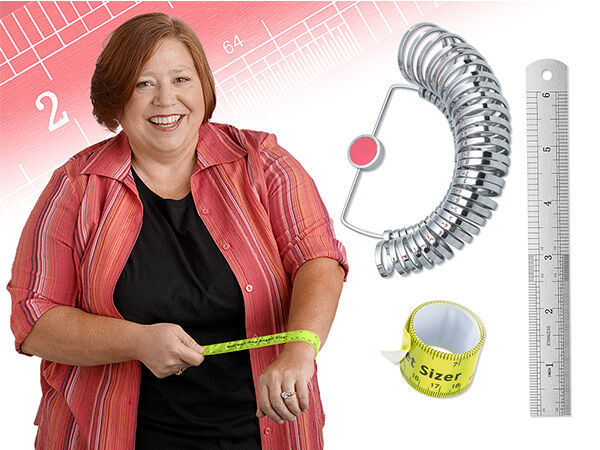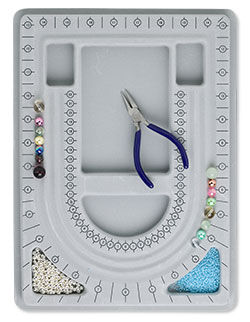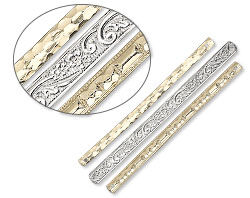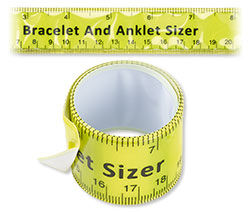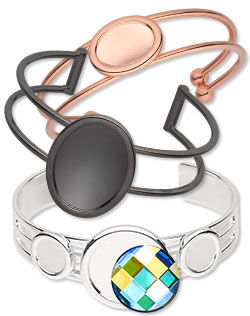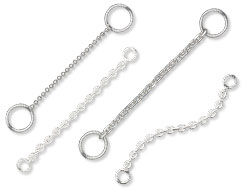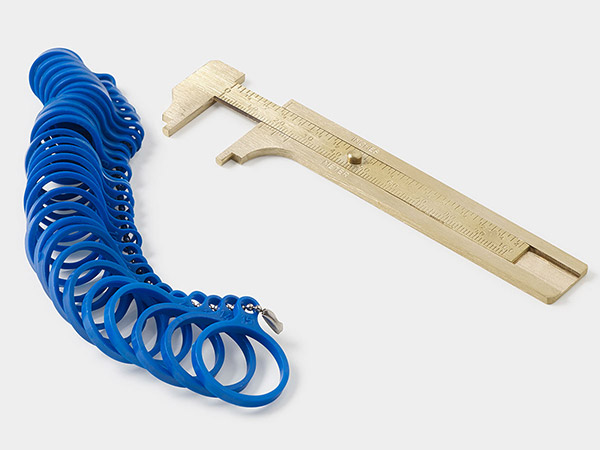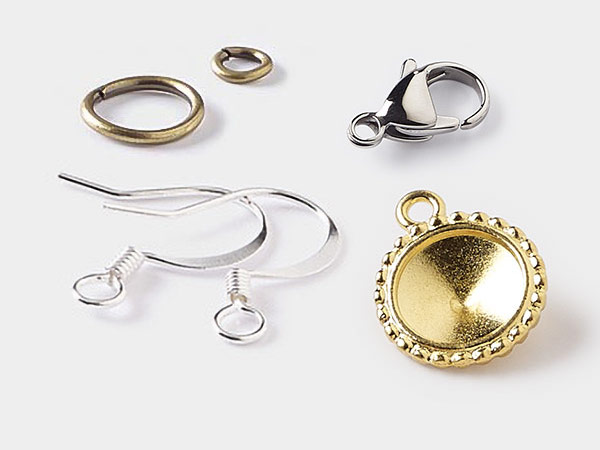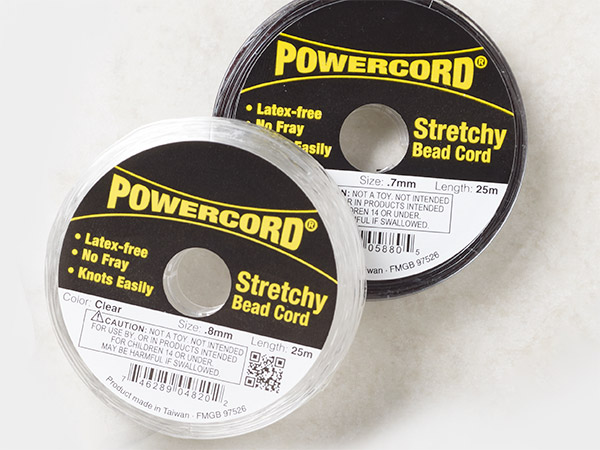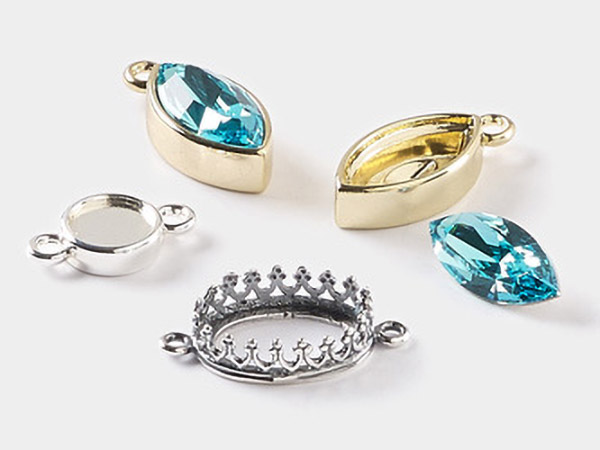Size Does Matter: Making Jewelry with the Proper Fit
It's an old joke, in some circles: size doesn't matter. Yet, jewelry that doesn't fit simply doesn't get purchased. And if purchased, could get returned, with cost to the jewelry maker in both money and reputation. This is especially important for designers who are creating custom work on commission. Protect your investment in your creations with these tips and techniques for making sure your jewelry fits whether it's for a particular client or offered at galleries and fairs.
Meeting the Standards
Jewelry has a range of traditional and standardized sizes: necklace lengths, common bracelet circumference, average ring sizes, etc. Many necklines, especially in women's fashion, are designed to work with specific necklace and pendant lengths. Here are some tools and techniques for making sure your jewelry meets the standards:
Standardized Necklace
Necklace lengths include 18-, 20-, 24-, 30- and 36-inch styles for the ladies while the gentlemen's traditionally measure 18, 20 and 24 inches. Many ready-to-wear necklace cords and chains follow these lengths, making them ideal bases for attaching pendants and drops for easy-to-make and easy-to-sell finished jewelry. Pearl and other knotted bead necklaces follow their own rules and have specialized names based on their lengths.
Desktop Measuring
Use Handy*Tape® or get an inexpensive soft measuring tape from your local sewing goods or craft store—and tape it to the front edge of your beading desk or worktable. It's easy to measure out a length of chain, cord or thread for a variety of jewelry designs.
Bead Boards
If you're creating common jewelry sizes (such as 18-inch necklaces), you can increase your standardization by using bead boards. This is especially helpful when designing multi-strand necklaces or jewelry sets.
Rings
Designers can create their own finger rings using our convenient ring bases. The average size for women's rings ranges from size 6 to 8, while men's average from size 10 to 12. Of course, adjustable finger ring findings make it easier to design to fit a range of customers. Toe ring findings are already adjustable, as is our selection of ready-to-wear toe ring jewelry
It's always better to opt for a bit larger, for ring sizes, as you can offer a quick and easy way to ''size down'' an overly large ring using precious metal ring guards.
Measure Twice, Cut Once
There are two ways to get the proper measurements for your custom creations: measure the customer or measure their current jewelry. Here are some tools and techniques for making sure your jewelry is a good fit for your customers:
Rings
Whether you measure the customer's finger with slip-ons or measure their current ring with mandrels, ring sizing tools help you get the proper diameter for your finger ring creations. We also offer a FREE "Ring Size Guide"—just print it out actual size, cut the strips out and you're set for measuring your customers' fingers. Don't have a printer? Use a piece of string and the conversion chart included below the Ring Guide!
Bracelet/ Anklets
Measure your customers' wrists and ankles easily with this wearable ruler.
Making Adjustments
We've all read those labels: ''One size fits most.'' There's a little bit of truth in them. You can make pieces which fit a majority of your customers. Here are some tips for creating adjustable jewelry styles:
Stretch
Create stretch bracelets and rings using Powercord® or other stretch cords. A range of finished findings are ready to accept embellishment—or jewelry designers can create their own stretch designs from scratch using these components.
Wraparound
Beyond stretch jewelry, wraparound styles let designers offer one creation for multiple size customers. This can include slap-on bracelets (created with the memory wire core) and cuff bracelets.
Pre-Made Adjustable Clasps
Adjustable clasps mean more size range for your jewelry designs, so they're ideal for the designer who isn't creating on commission. Whether you opt for toggle, hook or lobster claw styles, you'll find a range of finishes available in already-made styles ideal for necklaces, bracelets, anklets—even belts!
Make Your Own Adjustable Clasps
Can't find just the style and finish you need? Create your own adjustable clasps using extender chains or a line of jump rings and your preferred style of hook, lobster claw or springring clasps.
Some jewelry designers use a line of crochet- or macramé-covered Oh! Ring™ rubber components or nylon-covered rubber loops with a bead that's just slightly larger than the inner diameter of the Oh! Ring, as a form of adjustable button clasp seen. Other styles include adjustable sliding knots or macramé sliding tube closures. (Learn more about macramé techniques with our how-to videos These are ideal options if your designs need to avoid using metal due to environment—just think of the jewelry market for MRI technicians!—or metal sensitivities.
Whether you're designing on commission, or selling your finished designs online, your jewelry has to be the right size. Make sure your creations offer customers either a custom fit or designs that can be adjusted to suit. Because, as the old joke says, size DOES matter.
Shop for Your Materials Here:
Have a question regarding this project? Email Customer Service.
Copyright Permissions
All works of authorship (articles, videos, tutorials and other creative works) are from the Fire Mountain Gems and Beads® Collection, and permission to copy is granted for non-commercial educational purposes only. All other reproduction requires written permission. For more information, please email copyrightpermission@firemtn.com.
